Solar water heater work in winter, Many people are troubled by this problem, and whether solar water heaters can be used in the night and rainy seasons. This is actually a common problem of the advantages and disadvantages of water heaters. This article will detail the working principle of solar water heater system, temperature range, and other detailed guidelines.
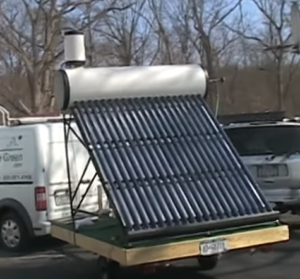
Even if the outside temperature is low in winter, does it affect the solar water heater?
With good insulation, sunlight will be able to heat the water quite well in a solar water heater in winter. The hot water tank is caused by the radiation energy of the sun, which can come through the glass and heat up enclosures, even if the outside temperature is well below freezing – providing good insulation can ensure very small heat loss.
However, diffused sunlight, sometimes a feature on cloudy days, reduces the heating capacity of most solar water heaters. There is no specific technology to “suck out” so to speak, more heat from the sun’s rays during winter.
However, I suspect one can enhance the amount of light hitting the right area using mirrors, especially concave ones so that the fewer hours of direct sunlight available in winter can be better utilized.
It still comes down to the quality of insulation, and how much heat can be kept in the system, without losing it to the environment, all the way from the heating area to the utilization area.
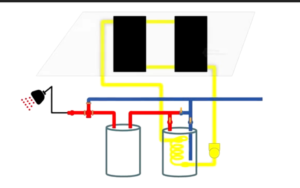
Do solar water heaters work in the winter
Solar water heaters don’t generate as much hot water in the winter.do solar water heaters work in the winter Systems installed will have freeze protection, and snow will melt off of your solar water heating collector well before it slides off of your roof.
Solar water heater winter, the solar water heating system can be effective because of efficient insulation. When the temperature is cold during winters, radiator fluid technology is used in solar water heaters.
In this system, a liquid catalyst or radiator fluid is warmed by sun’s energy and it is pumped in the heat exchange tank.
The heat exchange tank exchanges the heat of the fluid with water and warms the water in the storage tank. Radiator fluid should be checked before winter starts to ensure proper heating of water.
Winter solar water heater recommend
Flat plate solar water heater Split type solar water heating system
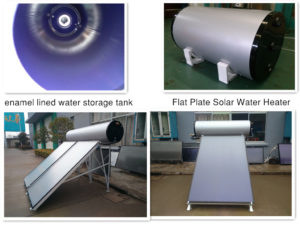
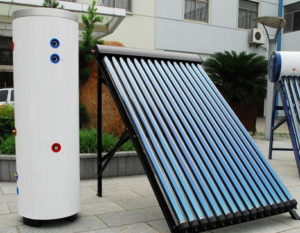
Electric storage water heater Heat Pipe Collector Solar Water Heater
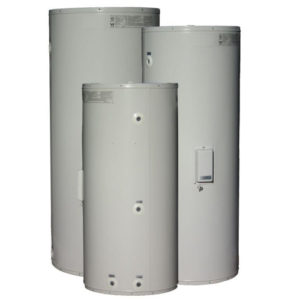
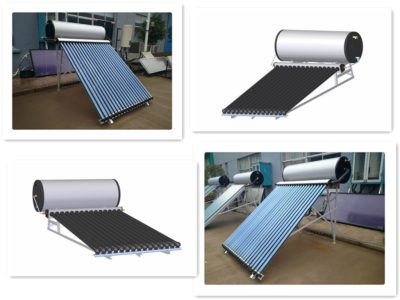
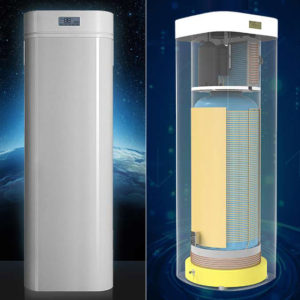
Solar water heater in winter
Every link can become the bottleneck of solar water heater in winter. The vacuum tubes produced by some small manufacturers are of poor quality and small specifications, leading to low thermal efficiency of hot water production system.
Or the whole machine anti-freeze ability is poor, such as the water tank insulation effect is poor, the hot water cannot keep warm, the pipeline is frozen, the hot water circulation is not smooth, Or partial install solar water heater is not standard.
Solar water heater winter solution
With good insulation, sunlight will be able to heat the water quite well in a solar water heater winter. The heating is caused by the radiation energy of the sun, which can come through the glass and heat up enclosures, even if the outside temperature is well below freezing – providing good insulation can ensure very small heat loss.
How well will it work in the middle of winter when it’s below freezing outside and the sunlight is weak?
The first thing to remember is that solar water heaters are not meant to completely replace your water heater. A typical solar water heater will be able to heat 60-80% of the water you use over the course of that year.
From April through September, nearly all of your hot water will be solar heated. In winter, the percentage of your hot water heated by the sun drops to as low as 10-20%—as you might expect with short days and weak sun in December. That’s why practically every solar water installed in the US will be connected to a backup conventional water heater to ensure that your hot water needs continue to be met even in January.
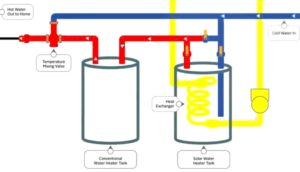
Two ways of collecting solar water heaters
evacuated tube collectors are the most efficient collectors available. Each evacuated tube is similar to a thermos in principle. A glass or metal tube containing the water or heat transfer fluid is surrounded by a larger glass tube.
The space between them is a vacuum, so very little heat is lost from the fluid.
These collectors can even work well in overcast conditions and operate in temperatures as low as -40°F. Individual tubes are replaced as needed. Evacuated tube collectors can cost twice as much per square foot as flat plate collectors.
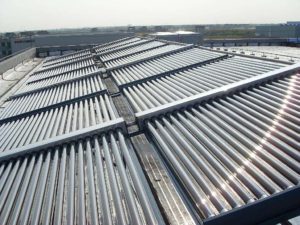
Flat-plate collectors typically consist of copper tubes fitted to flat absorber plates. The most common configuration is a series of parallel tubes connected at each end by two pipes, the inlet and outlet manifolds. The flat plate assembly is contained within an insulated box, and covered with tempered glass.
Flat plate collectors are typically sized to contain 40 gallons of water. Two collectors provide roughly half of the hot water needed to serve a family of four.
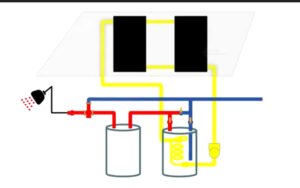

The installation of the electric heating device can perfectly solve the method of low water temperature in winter.
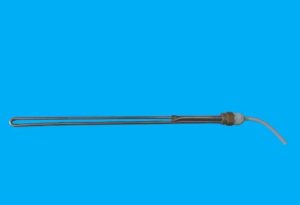
Water heater auxiliary electric heating working principle:
It is the heating and non-heating of the thermostat through the on and off. The general concept of insulation is short-time heating. When heating, the rated power of the water heater is still used.
After the circuit is connected, if the water temperature is lower than 50 °C, the temperature controller is automatically turned on, the water heater is heated at the beginning, and the water temperature reaches the preset temperature of the water heater (75 ° C to 85 ° C), the thermostat is disconnected, and the water heater stops heating.
The energy of the sun, the light of the sun, is composed of heat and sunlight. Both can be captured, converted and used at home to add hot water. The thermosiphon solar water heater consists of a tank (accumulator) and a solar collector connected to the tank.
Here are a few ways to improve the water temperature of solar water heaters in winter:
- Adding auxiliary electric heating
- Add heat preservation device to water supply pipe
- Choose a reasonable angle when installing the water heater
- Installing a reflective light device at the bottom of the vacuum tube
Here is a youtube video about the winter water heater guide
Rainy season and evening solar hot water solution
If you run out of solar heated water or the water is not hot enough, your solar storage tank has a single quick recovery electric element located near the top of the tank. If it’s cloudy or raining and you run out of hot water, this element will heat the top twenty gallons of water to the desired temperature.
On a cloudy day when the solar heated water is not hot enough, perhaps one hundred degrees, the upper element works like a hybrid heater and boosts the top twenty gallons to the desired temperature.
So when you run out of hot water the backup electric heating element kicks in. It’s only heating the top twenty gallons, not the entire tank. When the sun returns there is cold water for a collector to heat.
Do solar water heaters work at night?
Solar hot-water tank sometimes systems go with a backup unit,the solar water heater system is sometimes paired with a backup gas or electrical hot-water tank, Heat up water on days that don’t give enough (or no) daylight.
Augment heating the water just in case it’s not hot enough. So, if the water isn’t hot enough after you want it in the dark, the backup unit helps out. You’ll perpetually have quandary not matter what it’s like outside.
What is the working principle of the solar water heater?
The energy emitted by the sun, the sun’s rays is formed of warmth and daylight. each is often captured, remodeled and utilized in your home to heat water.
A thermosiphon solar storage tank consists of a tank (accumulator) and a reflector that is connected to the tank.
The transfer between tank and collector is ruled by gravity (hot water density is below cold water density). rather than a pump, the pressure differential between hot and cold is employed as propulsion energy. this is often the “thermosiphon principle”. so as to work, the collector (heat generator) should be placed below the tank.
The heat transfer medium is heated within the reflector. the recent liquid within the collector below is lighter than the cold liquid within the tank higher than the collector. As shortly because the lighter hot liquid rises, gravity circulation starts.
Related Searches: Flat plate solar water heater | Electric storage water heater | Air source water heater
Want to know more?(Solar Water Heater)
Email: [email protected]
WhatsApp:+86 157 2077 3477
Skype :+86 157 2077 3477
